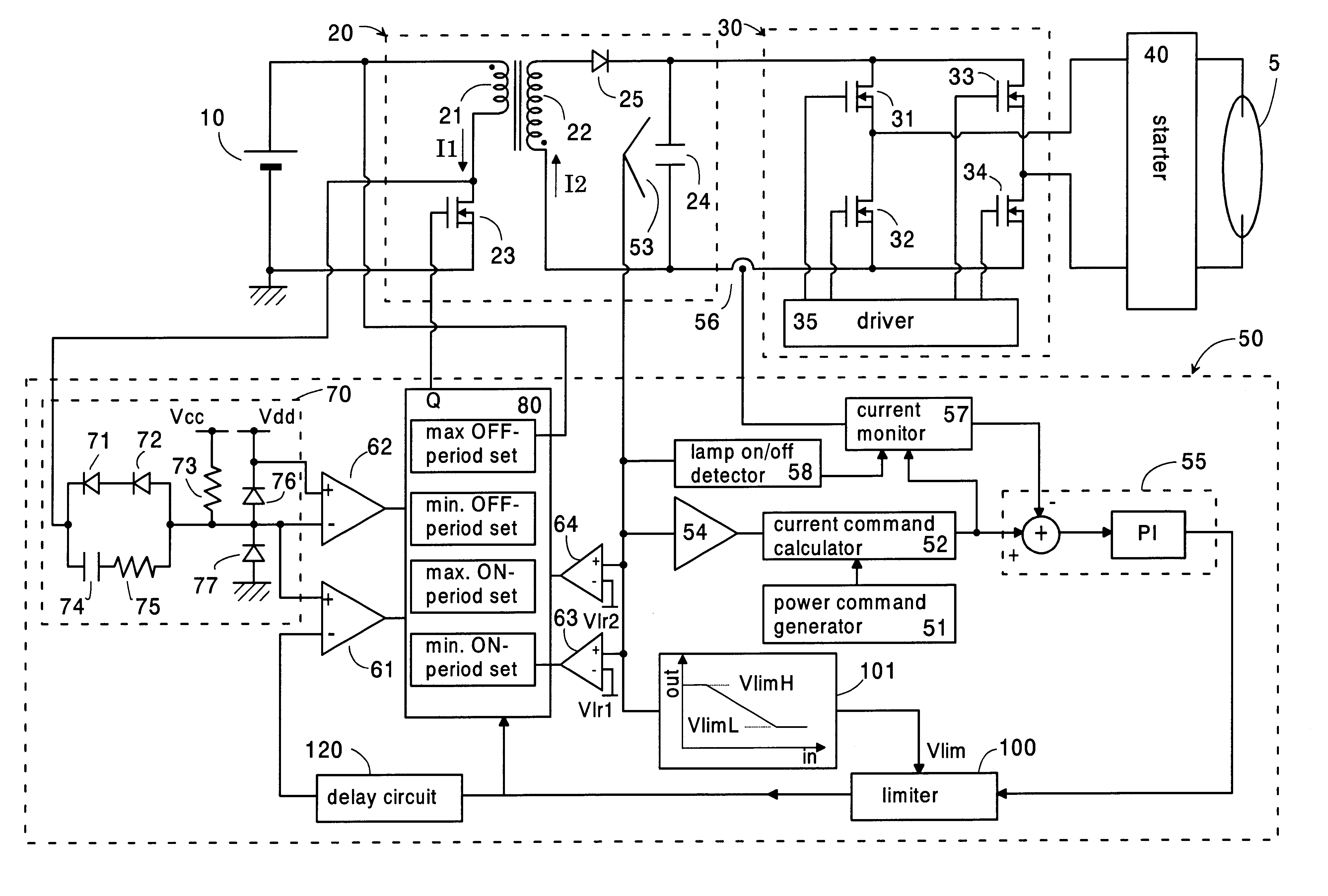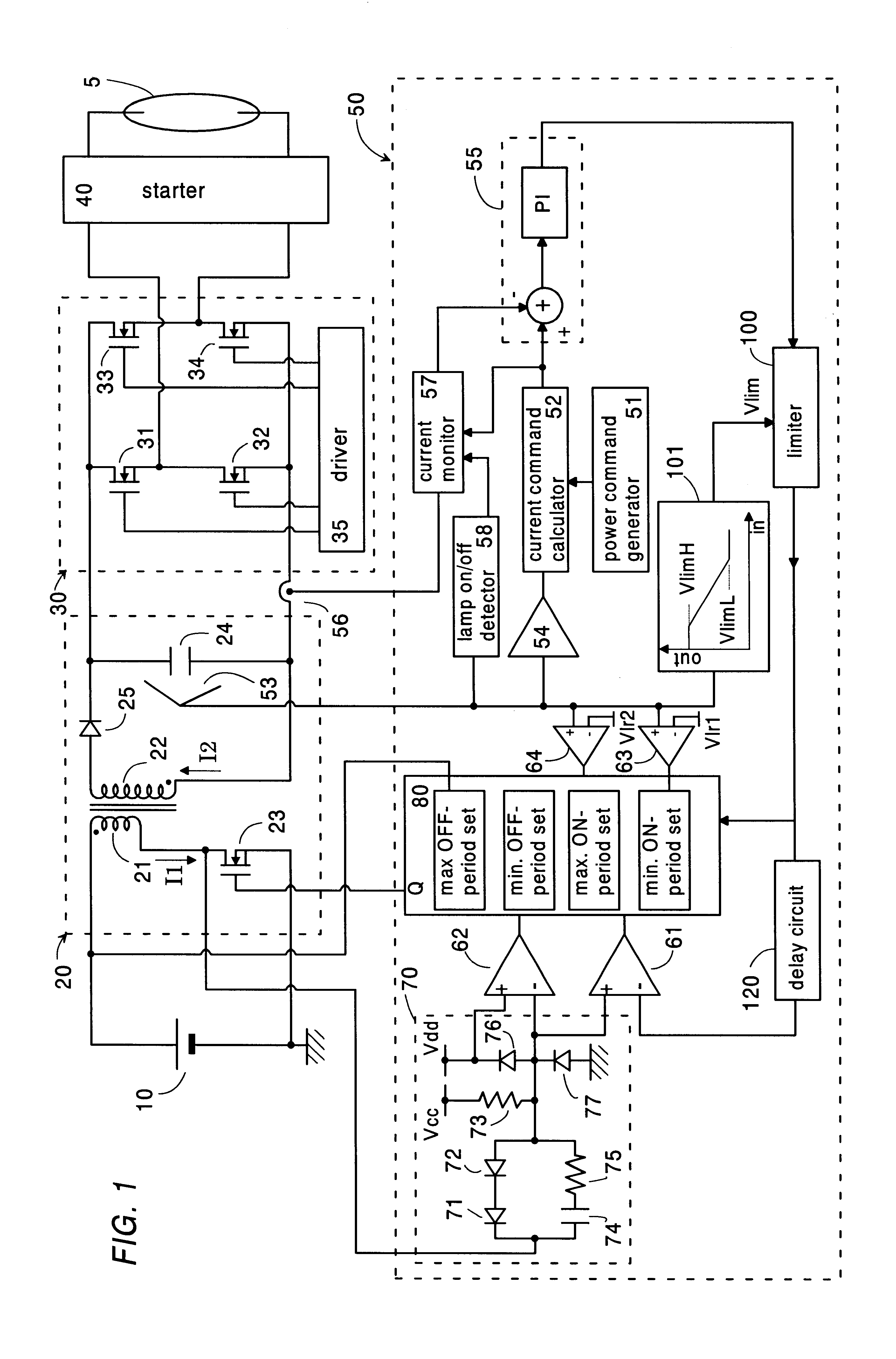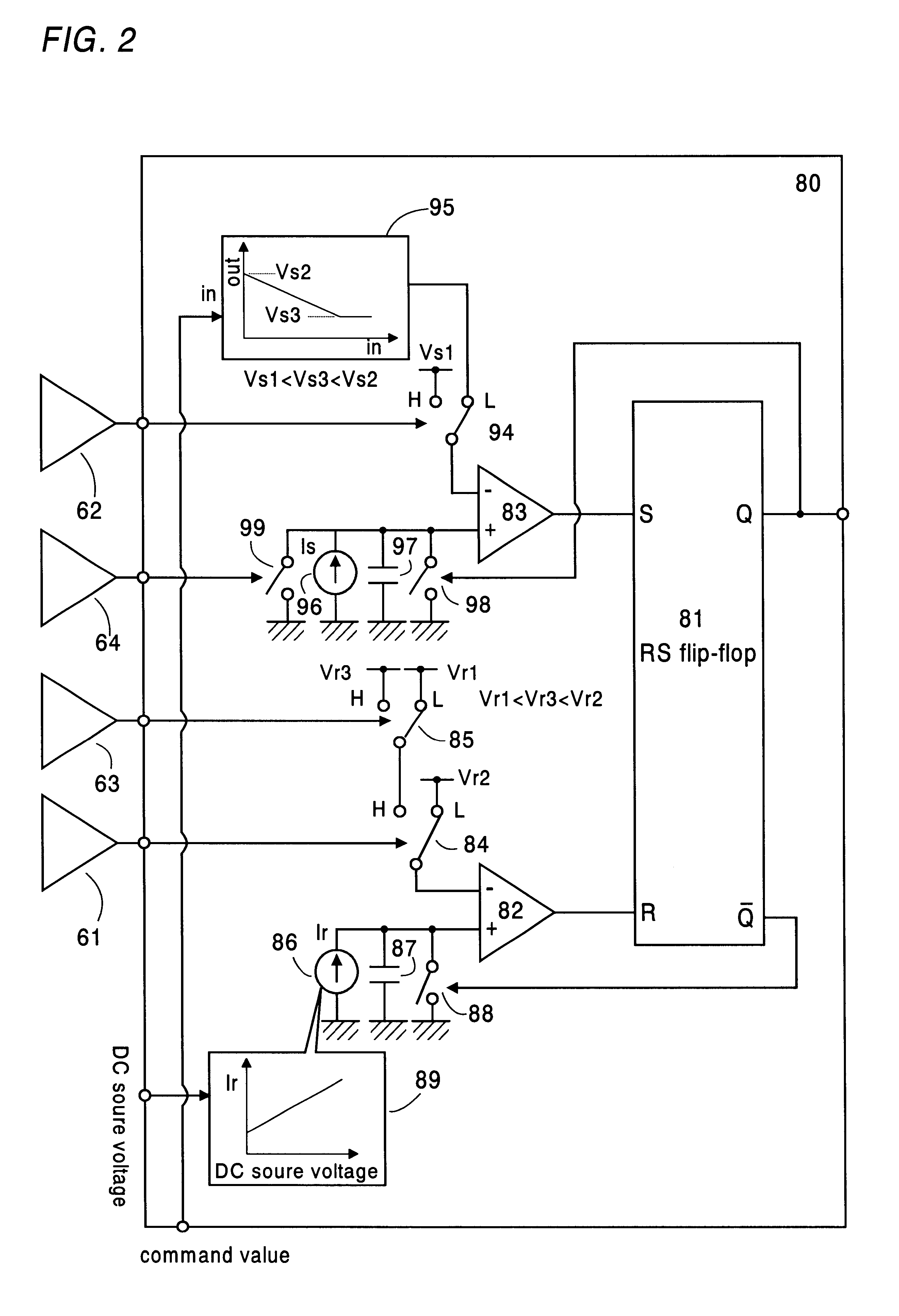Ballast for a discharge lamp
a discharge lamp and ballast technology, applied in the direction of electric variable regulation, process and machine control, instruments, etc., can solve the problems of inability to accept ballast, low switching frequency, and failure to turn off the switching elemen
- Summary
- Abstract
- Description
- Claims
- Application Information
AI Technical Summary
Benefits of technology
Problems solved by technology
Method used
Image
Examples
Embodiment Construction
This application is based on application No. 11-147193 filed in Japan, the content of which is incorporated hereinto by reference.
Referring now to FIG. 1, there is shown a ballast for a discharge lamp in accordance with a first embodiment of the present invention. The ballast comprises a voltage converter 20 providing a smoothed DC voltage from a DC source voltage supplied from a battery 10, an inverter 30 receiving the DC voltage and providing an AC voltage which is applied through a starter 40 to operate the discharge lamp 5, for example, a high intensity discharge lamp utilized as a headlamp of an automobile.
The converter 20 is configured as a fly-back converter comprising a transformer with a primary winding 21 and a secondary winding 22, and a switching element or transistor 23 connected in series with the primary winding across the battery 10. The transistor 23 is driven by a controller 50 to turn on and off for repetitively interrupt a primary current I1 flowing through the p...
PUM
 Login to View More
Login to View More Abstract
Description
Claims
Application Information
 Login to View More
Login to View More - R&D
- Intellectual Property
- Life Sciences
- Materials
- Tech Scout
- Unparalleled Data Quality
- Higher Quality Content
- 60% Fewer Hallucinations
Browse by: Latest US Patents, China's latest patents, Technical Efficacy Thesaurus, Application Domain, Technology Topic, Popular Technical Reports.
© 2025 PatSnap. All rights reserved.Legal|Privacy policy|Modern Slavery Act Transparency Statement|Sitemap|About US| Contact US: help@patsnap.com



